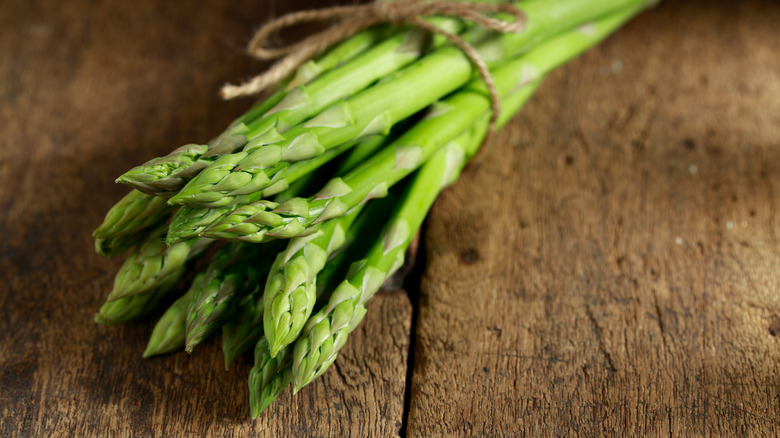When You Eat Too Much Asparagus, This Is What Happens To You
Asparagus is a delicious and versatile vegetable that offers an array of health benefits. But even vegetables can offer some negative side effects when you eat too many of them at a time. Asparagus is high in fiber, which many Americans need to consume more regularly. However, too much fiber at a time can cause digestive upset (via Livestrong). If you aren't used to eating a lot of fiber, you may experience uncomfortable digestive issues like gas and bloating.
The most well-known effect of eating asparagus is the experience of smelly urine afterward. This vegetable contains something called asparagusic acid, which is a chemical compound that breaks down into new compounds that smell like sulfur when it's digested. That new compound is what's responsible for the unpleasant odor you may smell when going to the bathroom after eating asparagus. Fortunately, neither of these side effects are harmful to your health. Unpleasant urine can't really be avoided, but you can reduce digestive upset by eating smaller amounts of asparagus at a time.
Health benefits of asparagus
The positive benefits of asparagus greatly outweigh the negative ones. As we mentioned, this vegetable is packed with fiber (via Healthline). One cup of asparagus contains over three grams of fiber, which is over 10% of your recommended daily intake. Fiber can aid in weight loss, improve digestion, and reduce the risk of developing high blood pressure, heart disease, and diabetes. Asparagus is full of vitamins and minerals including vitamins C, A, E, and K, folate, potassium, and phosphorous. It also has small amounts of iron, zinc, and riboflavin.
Asparagus is a great source of antioxidants, which protect the body from damage caused by free radicals. These can also lower your blood pressure, reduce inflammation in the body, and protect you from diseases like cancer. This vegetable is delicious and versatile, making it easy to incorporate into your diet. It can be steamed, boiled, grilled, roasted, or sauteed. It is great on its own or when incorporated into other dishes like frittatas, omelets, and pasta dishes.


